Distressed faux locs are a popular hairstyle that recreates the look of natural dreadlocks using extensions. These locs are intentionally frayed and have a rough texture, giving them a rugged, lived-in appearance.
With their unique and stylish look, distressed faux locs have become a go-to choice for individuals looking to add a touch of flair to their hair. Whether you’re attending a music festival, going on vacation, or simply want to change up your look, distressed faux locs offer a versatile and low-maintenance option.
We’ll explore everything you need to know about distressed faux locs, from how they’re created to how to care for them, so you can confidently rock this trendy hairstyle.
What Are Distressed Faux Locs
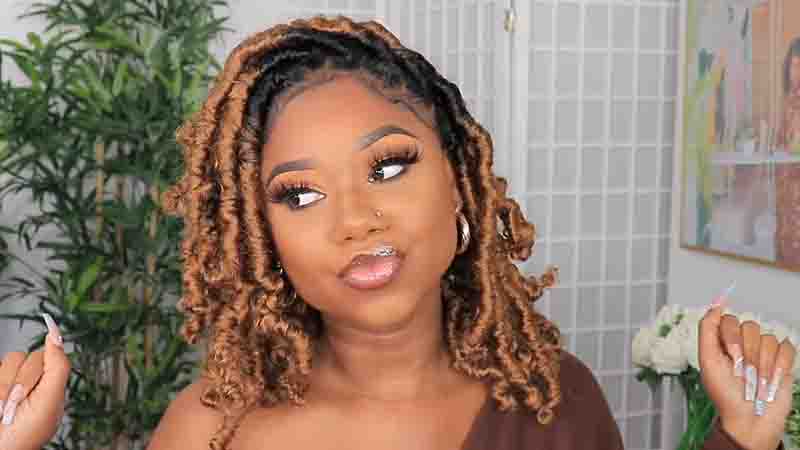
Distressed faux locs. They’ve become a popular choice for those craving a bohemian, carefree look without the commitment of traditional locs. But what exactly are distressed faux locs? Let’s dive in and explore this trendy hairstyle.
Distressed faux locs are a variation of traditional faux locs, with a twist. While traditional faux locs mimic the appearance of natural dreadlocks, distressed faux locs embrace a more imperfect, “lived-in” aesthetic. The goal is to create a style that looks effortlessly chic, with a hint of rugged charm.
These unique locs differ from traditional ones in their appearance and technique. The distressed locs intentionally have a rougher texture, a looser and more undone appearance, and are often adorned with beads or accessories. The process involves a combination of braiding, wrapping, and crochet techniques, resulting in a look that exudes individuality and edginess.
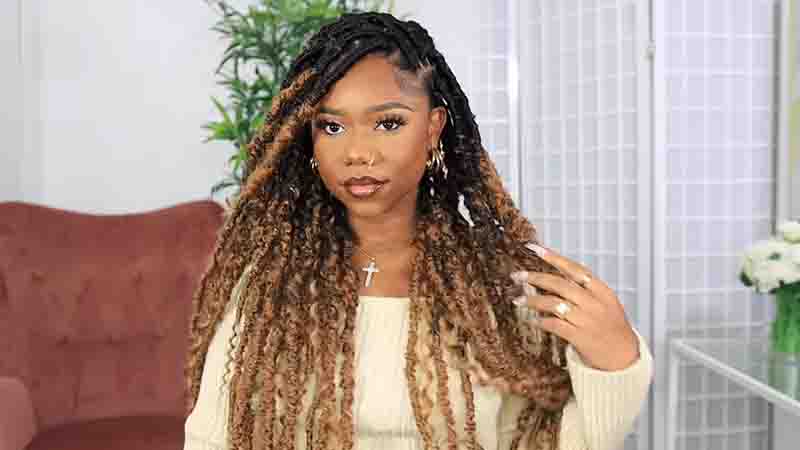
So, why are distressed faux locs gaining such popularity? Well, it’s because they offer a fresh take on the traditional style, allowing for greater self-expression and versatility. Plus, with the right care and maintenance, distressed faux locs can last for weeks, giving you the freedom to rock this trend for an extended period.
Choosing The Right Materials And Tools
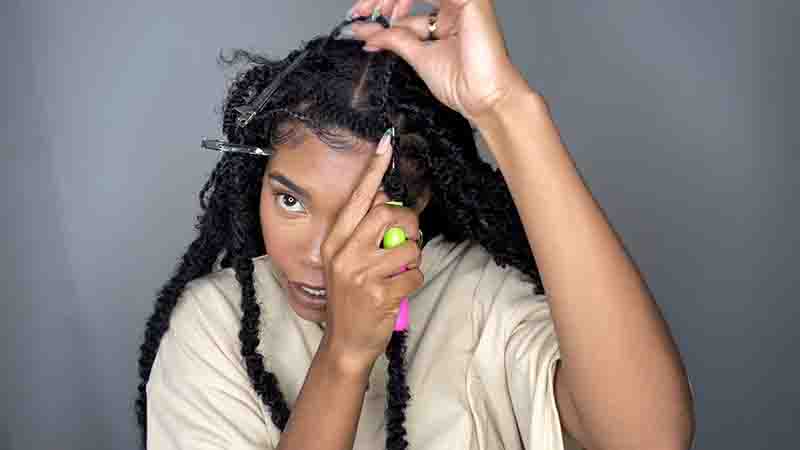
Creating distressed faux locs is a unique and stylish way to rock this protective hairstyle. Here are some key considerations and steps to follow when creating distressed faux locs:
1. Choosing the Right Hair Extensions
Length: Determine the length you want for your faux locs. Distressed faux locs often look great with varying lengths, so consider mixing long and short extensions for a textured appearance.
Thickness: Decide on the thickness of your locs. You can opt for thinner locs for a more delicate look or thicker ones for a bolder style.
Texture: Choose extensions with a texture that matches your desired look. Curly or wavy extensions can add dimension and flair to your distressed faux locs.
Color: Experiment with different color combinations to create a unique and eye-catching appearance. You can go for natural shades or try vibrant and unconventional colors to make a statement.
2. Gathering Tools
Latch Hook or Crochet Needle: You’ll need a latch hook or crochet needle to attach the hair extensions to your natural hair. This tool helps pull the extensions through your hair and secure them.
Comb: Use a comb to section your hair neatly, making it easier to work with during the installation process.
Spray Bottle: Fill a spray bottle with water or a moisturizing product to keep your hair and extensions hydrated throughout the process. Hydration is crucial to prevent breakage and ensure a successful outcome.
Preparing Your Hair For Distressed Faux Locs
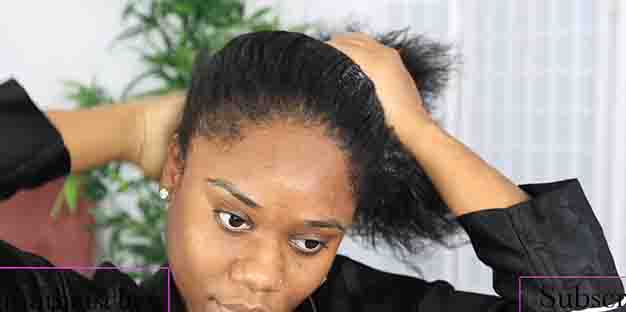
Before embarking on the journey of creating distressed faux locs, it’s crucial to properly prepare your natural hair. This preparation ensures a successful installation and helps protect your natural hair. Here are the key steps to follow:
1. Sectioning and Parting Your Hair
Begin by dividing your hair into small, manageable sections.
Proper sectioning and parting make the installation process easier and ensure that each faux loc is placed correctly.
2. Creating a Solid Foundation with Braids or Twists
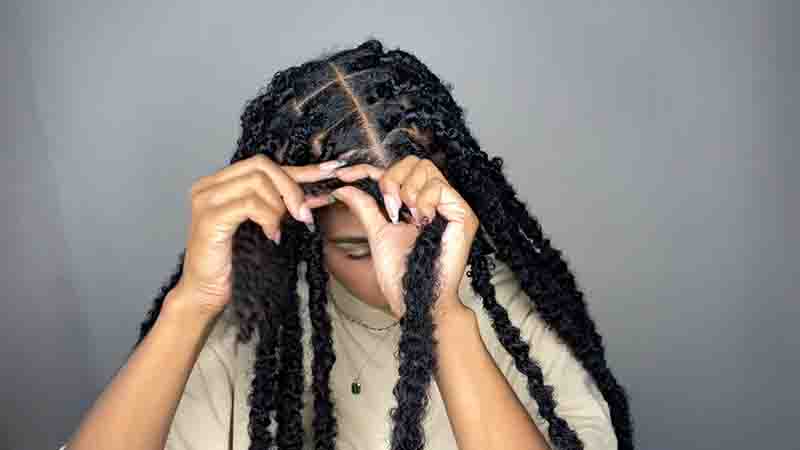
To ensure the longevity and secure hold of your distressed faux locs, establish a solid foundation.
This foundation can be achieved by either braiding or twisting your natural hair before adding the synthetic locs.
3. Promoting Healthy Hair Growth
Taking the time to properly prepare your hair not only aids in the installation process but also promotes healthy natural hair growth.
Ensuring that your natural hair is in good condition before adding extensions is essential for maintaining hair health.
Installing Distressed Faux Locs
Creating distressed faux locs is a trendy and artistic way to enhance your overall look. With our comprehensive step-by-step guide, you can achieve the perfect style that suits your preferences. Here’s how to install distressed faux locs:
1. Create a Foundation
Establish a solid foundation for your distressed faux locs. You can achieve this by braiding your natural hair.
Braiding provides the structure and support needed for the locs to hold securely.
2. Attach Extensions
Choose your preferred method for attaching the synthetic loc extensions. Options include crocheting, braiding, or other techniques.
This step allows for flexibility and customization based on your style preferences.
3. Blend Extensions with Natural Hair
To create a seamless and natural appearance, employ techniques like palm rolling or twisting to blend the extensions with your own hair.
Ensuring that the transition between your natural hair and the faux locs is smooth is key to achieving an authentic look.
4. Style as Desired
Once the distressed faux locs are installed, style them according to your individual taste and vision.
You can get creative with different accessories, beads, or wraps to complete your unique and stunning look.
Achieving the Perfect Weathered Look
Distressed faux locs have become a popular choice for individuals seeking a bohemian and edgy hairstyle. To create the ideal weathered and worn appearance, various methods for distressing the locs can be employed, resulting in a natural and effortless look.
Adding the Distressed Look: To achieve the distressed look with faux locs, consider the following methods:
1. Crochet Needle Technique
Use a crochet needle to gently pull and unravel sections of the locs. This process creates a frayed and worn effect, mimicking the appearance of locs that have been lived in.
2. Backcombing for Texture
Utilize a teasing brush to lightly backcomb the locs. This technique adds volume and texture to the hair, contributing to the distressed appearance.
3. Scissor Detailing
Employ a small pair of scissors to carefully cut and fray the ends of the locs. This precise method adds to the distressed aesthetic.
Achieving a Natural and Effortless Look: To make your distressed faux locs appear more authentic, consider the following steps:
1. Highlighting and Lowlights
Add highlights or lowlights to the locs using tinting spray. Opt for a slightly lighter or darker shade than the locs to create subtle color variation.
This technique adds depth and dimension to the hair, enhancing the realistic appearance of weathered locs.
2. Patience and Precision
Remember that distressing faux locs requires patience and precision. Take your time to experiment with different techniques until you achieve the desired look that suits your style best.
Styling And Maintaining Distressed Faux Locs
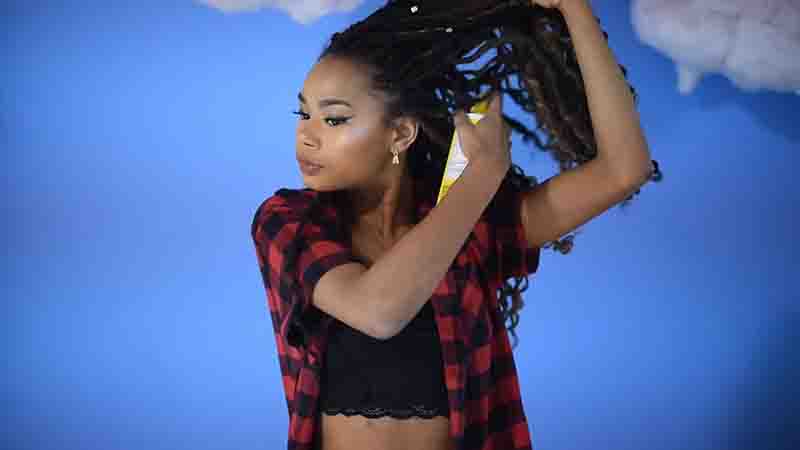
Distressed faux locs offer a trendy and edgy style that allows for various styling options to express your unique personality. Here are some styling ideas and essential maintenance tips to keep your distressed faux locs looking fabulous:
Styling Options
Loose and Bohemian Look: Wear your distressed faux locs down for a relaxed and bohemian vibe. This style showcases the texture and weathered appearance of your locs.
Half-Up, Half-Down Style: For a more polished appearance, try a half-up, half-down hairstyle with your distressed faux locs. Use decorative pins or hair cuffs to secure the pulled-back section.
Accessorize: Add a touch of glamour by accessorizing your distressed faux locs with beads, wraps, or hair cuffs. These embellishments can elevate your overall look and make a statement.
Maintenance Tips
Regular Moisturization: To prevent dryness and breakage, regularly moisturize your distressed faux locs. Choose a lightweight oil or moisturizing spray to keep your hair hydrated without weighing it down.
Protective Sleep Measures: While sleeping, protect your locs by wrapping them in a satin or silk scarf. This minimizes friction and helps prevent frizz.
Avoid Excessive Manipulation: Refrain from excessive manipulation and styling to minimize damage to your locs. Avoid using heat tools and opt for low manipulation hairstyles to preserve the structure of your locs.
Gentle Cleansing: Use a residue-free shampoo and conditioner to gently cleanse your locs. Avoid products that contain sulfates or harsh chemicals, as they can lead to buildup and weaken your locs.
Professional Maintenance: Visit a professional loctician periodically for maintenance and retwisting. This helps keep your locs neat and tidy, promoting their longevity.
Environmental Protection: Protect your locs from environmental factors such as sunlight, chlorine, and saltwater. Apply a leave-in conditioner with UV protection or wear a hat to shield your locs from the sun’s rays.
Removing Distressed Faux Locs
Removing distressed faux locs is a process that should be done safely and efficiently to preserve the health and integrity of your natural hair. Here are some steps to follow when removing distressed faux locs and transitioning to a new hairstyle:
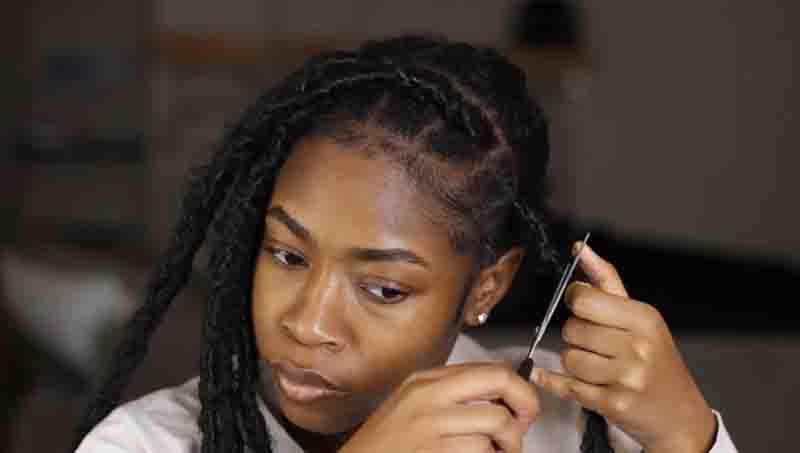
1. Gentle Unraveling
Start by gently unraveling the locs, one by one.
Use a small amount of conditioner or oil to make the process easier and prevent hair breakage.
Take your time to avoid pulling or tugging on your natural hair.
2. Careful Cutting
Alternatively, you can carefully cut the locs close to the root.
Be cautious not to cut your own hair during this process.
Use sharp scissors to ensure a clean cut.
3. Hair Care and Restoration
After removing the distressed faux locs, your natural hair may need some extra care and attention.
Begin with a deep conditioning treatment to replenish moisture and restore your hair’s health.
Consider hot oil massages to rejuvenate your hair and scalp.
4. Transition to a New Style
Give your hair a break before transitioning to a new hairstyle to allow it to recover.
Opt for gentle styles such as braids or twists to provide a protective environment for your hair.
Regularly moisturize and care for your hair during this transition phase to maintain its health.
FAQ
To make faux locs look distressed, you can intentionally create an uneven and rugged appearance by leaving some sections of hair loosely wrapped and others more tightly coiled. You can also use a crochet needle to roughen the texture and create a distressed look.
The number of packs of hair needed for distressed faux locs depends on the desired fullness and thickness. On average, 6-8 packs may be sufficient for a full head of distressed faux locs.
The number of packs of hair needed for distressed locs can vary based on the desired thickness and length. On average, 6-8 packs may be enough for a full head of distressed locs.
Distressed locs are often created using Marley hair or similar textured hair extensions. The coarse texture of Marley hair helps achieve the rugged and distressed appearance.
Distressed locs are made using hair extensions, such as Marley hair, that are wrapped and coiled around your natural hair to create locs with an intentionally uneven and rugged texture.
The main difference between faux locs and distressed locs is the intentional rugged and uneven appearance of distressed locs. Faux locs aim for a neater, more uniform look, while distressed locs have a deliberately messy and distressed appearance.
The cons of faux locs may include:
Initial frizziness during the loc maturation process.
Maintenance required to keep locs looking neat.
The need for regular upkeep to prevent frizz.
Potential itching or discomfort, depending on installation.
Mermaid locs are a style of faux locs that are characterized by their long and flowing appearance. They often feature a blend of colors, giving them a vibrant and eye-catching look.
Distressed locs are typically made using textured hair extensions like Marley hair. The coarse texture of this hair type contributes to the distressed and rugged appearance.
Faux locs themselves should not damage your hair if installed and maintained properly. However, improper installation, excessive tension, or neglect can potentially lead to hair damage.
The choice between soft locs and faux locs depends on your desired look and preference. Soft locs have a natural and textured appearance, while faux locs can be sleek and uniform. The “better” option depends on what style you prefer.
The cost of faux locs can vary depending on factors such as location, stylist, and the type of hair used. On average, faux locs can range from $150 to $300 or more.
Yes, you can dip faux locs in hot water to seal the ends, shape the locs, or create various styles such as curls or waves. Dipping is a common technique used for styling faux locs.
The best type of hair for faux locs often includes Marley hair or similar textured extensions to achieve a natural and textured loc look.
Faux locs can be a healthy hairstyle option if installed and maintained properly. They can protect your natural hair from daily manipulation and exposure to environmental factors.
The longevity of distressed faux locs can vary depending on maintenance and care. On average, they can last several weeks to a few months, like traditional faux locs.
Faux locs can require moderate maintenance to keep them looking neat and prevent frizz. This may involve retightening and regular upkeep.
Butterfly locs are a protective style and should not damage your hair if installed properly and cared for correctly. Avoiding excessive tension during installation is essential.
Gypsy faux locs are a style of faux locs that are characterized by their bohemian and eclectic appearance. They often incorporate various colors and adornments, creating a unique and free-spirited look.
Butterfly faux locs are a style of faux locs with slightly flared or “butterfly” ends, giving them a distinct appearance. They can be created using hair extensions and a crochet technique.
Goddess locs are a style of faux locs characterized by their natural, textured appearance and the inclusion of wavy or curly ends. They often have a more relaxed and bohemian look.
The best hair for faux locs often includes Marley hair or Kanekalon hair for a natural and textured appearance. The choice of hair type depends on your desired look and texture.
Conclusion
After reading this blog post about distressed faux locs, you should now have a clear understanding of what they are and how to achieve them. With their edgy and fashionable look, distressed faux locs have become a popular choice for people looking to switch up their hairstyle.
By following the tips and techniques mentioned in this post, you can create stunning distressed faux locs that will turn heads wherever you go. So go ahead, unleash your creativity and rock those stylish locs!

